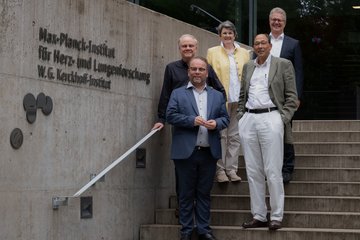Aging and Adaptation of the Cardiovascular System
During the lifetime of an organism the cardiovascular system undergoes various adaptive changes in response to physiological cues. These changes reflect the need of an organism to maintain sufficient circulation at all costs. Most often adaption guarantees proper functioning of the cardiovascular system but at certain occasion adaption derails and acquires pathological qualities. A circulus vitiosus might develop, which causes more harm than the original cause. Adaption in the myocardium secondary to myocardial infarction (MI) and/or arterial hypertension often leads to cardiac remodeling, a rearrangement of normally existing structures, which allows both the myocyte and the collagen network to adaptto new working conditions.
Cardiac remodeling is particularly prevalent in elderly patients because of the higher incidence of the primary disease and the extended time it takes for a tissue to undergo remodeling when the initiating stimulus is moderate. Cardiac remodeling is often accompanied by ventricular fibrosis (i.e., increased collagen concentration, which is multifactorial and caused by senescence, ischemia, various hormones, and/or inflammatory processes) and cell death, a parameter linked to fibrosis, which is usually due to oncosis, autophagy, and apoptosis and occurs in nearly all types of cardiac remodeling. The process of adaptation and cardiac remodeling is associated with cardiac hypertrophy and various changes in gene expression, including a general activation of developmental circuits, which f. e. cause appearance of slow isomyosin, reactivation of genes encoding for atrial natriuretic factor and the renin-angiotensin system, increased expression of smooth muscle markers and a diminished concentration of sarcoplasmic reticulum Ca2+-ATPase, s-adrenergic receptors, and the potassium channel responsible for transient outward current. Clinically, fibrosis is a major marker for cardiac failure and a crucial determinant of myocardial heterogeneity, increasing diastolic stiffness, and the propensity for reentry arrhythmias.
Research in the department also revealed that the loss of contractile structures within cardiomyocytes is a common event during end-stage heart failure induced by local signaling events and by cell-autonomous changes in the metabolism of cardiomyocytes.
Aging is a major risk factor for cardiac mal-adaptation and adverse cardiac remodeling. Cardiac fibrosis is a hallmark of "old" hearts leading to increased stiffness of ventricles and diastolic dysfunction. Hence, researchers in the department are committed to understand the basic features of aging in contractile tissues irrespective of whether the properties of tissue specific stem cells, the function of parenchymal cells or other parameters of aging individuals are affected. In this context, a class of protein deacetylases has attracted our attention since they have been associated with the aging process in different organisms.



